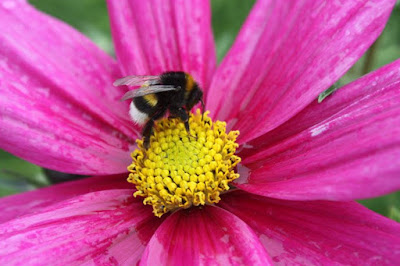I painted our concrete screened in porch floor about 15 years ago. I should probably point out that I did a pretty bad job. My husband was out of town and I was trying to do it start to finish while he was away, you know just to avoid the
"What's wrong with the way it is now?" question that men like to ask when they think something will be inconvenient. There were heavy things I couldn't move alone, the downside to
guerrilla decorating. The faux rug seemed like a good idea at the time...
After all this time it was looking pretty rough.
Here's a tip, if you have a metal cabinet outdoors place it on something!
But also in all fairness, I'm just impatient. When I am so close to putting things back and seeing how the finished project is going to turn out it's hard for me to restrain myself for hours, let alone days. When you are doing a project like painting a floor that you are going to want to stand up to wear and tear over time, self control is your best friend.
I'm literally so impatient I could not stop myself to take pictures during the process, so what we have here is before and after only.
The first step in this process is a trip to your hardware store and a discussion with the person in the paint department. I would have chosen the wrong paint if I hadn't done this. My porch had been painted previously and was chipped and peeling in a few places. Those details helped him recommend the right paint for the job. Even the type of paint I had used previously was important.
And measure your space before so you have the right amount of paint. I assumed it would take two gallons but the paint expert assured me it was a one gallon job. He was right and saved me having to return an unopened can later. If it's right off the shelf make sure to have them shake it up for you.
After returning home with your paint thoroughly clean the surface. I removed everything from the porch and scraped all the loose or chipped paint. I swept it thoroughly with a good broom. After that I used the shop vac to vacuum any remaining dirt from the entire surface.
Cut in around the edges. Since you are painting a floor and not a wall, doing it in reverse isn't an option.
You are going to have to stand somewhere.
Screw a mop or broom handle on to your roller for this project!
At this point I was so giddy about spilling the paint on the floor I didn't stop to take pictures. This is one project where you can forego the paint pan and just pour the paint on the floor. Paint as you would a wall.
Don't forget painting yourself in a corner is a cliche for a reason. You want to start in the far corner away from the door and paint yourself out of the room.
Now comes the hard part...waiting. The paint will be dry to walk on in 24 hours. It will be inconvenient. For us it meant having one of the dogs break loose and run down the street while we were going around the house to avoid walking on the wet porch.
After you have waited your entire day to walk on it you are going to start imaging where you want the furniture to go.
STOP.
This is the biggest lesson I learned this time around. There is a big difference between dry and
cured. Dry means the surface is dry to the touch and not tacky. Cured means the paint has hardened all the way through and when you press it with your fingernail, it won't leave an indention. Depending on the paint, surface, and environmental conditions, this process can take up to 30 days.
That's right.
Thirty days.
Because of this choosing when you are going to do this project is of the upmost importance. I would never have dreamed I could do this in August in Memphis because of the oppressive humidity. But I saw in the forecast that we were having a week of unseasonably low temps in the mid 80s and dryer air. So I pounced on my opportunity! Here's how it turned out!
In the background of this picture you can kind of see all the stuff that was on the porch piled up on the patio. Obviously I couldn't leave the stuff out there for a month waiting for the paint to cure. So I googled what to do and everyone said to wait as long as possible to put furniture back. In the meantime I noticed how bad the walls looked and painted them a stark clean white.
If you just can't wait you should place the furniture on wax or
parchment paper folded up to protect the paint while it cures. I painted
the porch on Saturday and put my furniture back on Wednesday.
For my husband's weights and the deck box where we store unopened bags of dog food I used a cheap beach mat from Lowe's that I had on hand. It also helped define the area.
This is an old cedar chest without a lid where we keep firewood in the winter. Right now I'm using it as a catch all. But look at that gorgeous floor!
I was finally ready to get to the fun part!
Arranging furniture...
Adding plants and accessories...
Every plant gets a waterproof container underneath!
You have to have someplace to place your coffee...
Finally, a fun piece of art for the wall finishes off the space.
All that's needed now is a book and a glass of lemonade. Happy porch sitting, y'all!



























